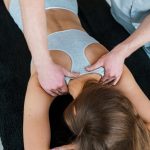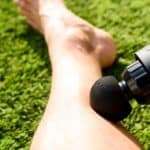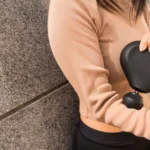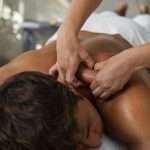If you’ve recently suffered a hamstring strain or pulled hamstring, you’re likely dealing with discomfort, tightness, and reduced mobility. Massage therapy is an effective way to reduce pain, improve blood flow, and speed up recovery, but proper technique is essential to prevent further injury.
In this guide, we’ll walk you through expert-backed massage techniques for hamstring strain relief, along with essential do’s and don’ts to help you recover safely.
Table of Contents
What is a Hamstring Strain?
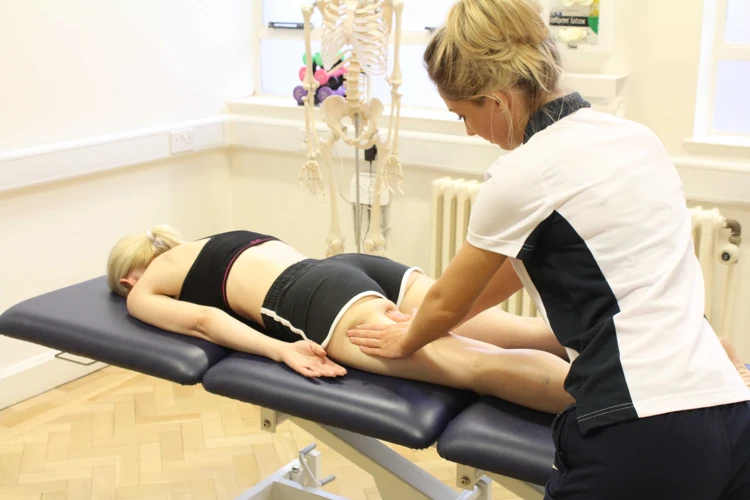
A hamstring strain or pulled hamstring occurs when the muscles at the back of your thigh are overstretched or torn. It’s commonly caused by activities like sprinting, jumping, or sudden movements. Symptoms include:
✅ Pain and tenderness in the back of the thigh
✅ Swelling or bruising
✅ Stiffness or weakness when trying to move
When Can You Start Massage for a Pulled Hamstring?
Massage should be introduced after the initial acute phase (48–72 hours post-injury) to allow swelling and inflammation to subside. Avoid deep pressure too soon, as it can worsen the injury.
How to Massage Pulled Hamstring
Massage is one of the best treatments for a pulled hamstring. Massage helps to reduce pain, improve mobility, and reduce inflammation. To massage a pulled hamstring, start by gently massaging the area in circular motions. Then, use deeper pressure to work the muscle and apply heat. Finally, use stretching techniques to help restore flexibility to the hamstring muscles.
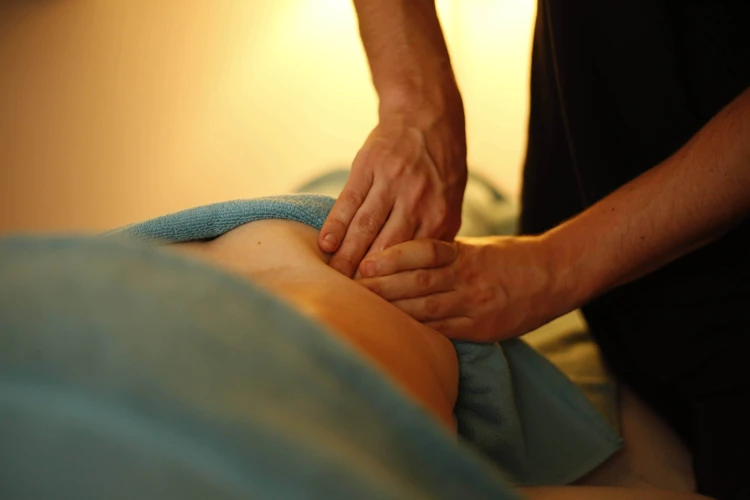
Causes of Pulled Hamstrings
- Overtraining: Doing too much physical activity without adequate rest can cause the hamstring muscles to become overworked and strained.
- Muscle Imbalance: Having an imbalance of strength between the hamstring muscles and the quadriceps can increase the risk of a hamstring strain.
- Inadequate Warm-up: Going into physical activity without a proper warm-up can cause the hamstring muscles to be unprepared for the activity, leading to an increased risk of injury.
- Incorrect Technique: Poor technique during physical activity can cause the hamstring muscles to be overstretched, leading to injury.
- Age: As we age, our muscles become weaker, making them more susceptible to injury.
- Muscle Tightness: Tightness in the hamstring muscles can increase the chances of a strain.
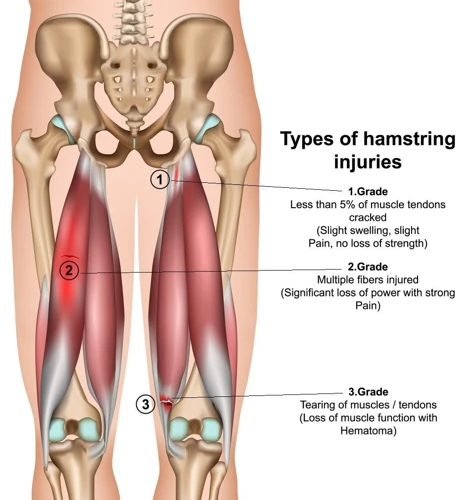
Effective Massage Techniques for a Pulled Hamstring
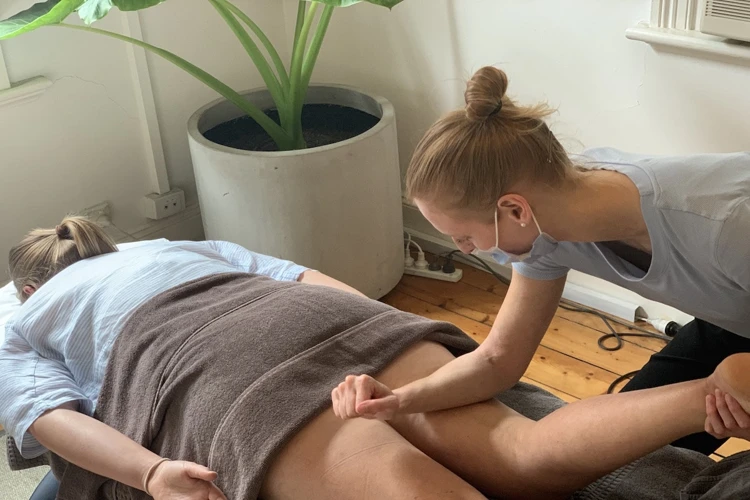
1. Effleurage (Gentle Stroking Massage)
🔹 Purpose: Improves circulation and warms up the muscle
🔹 How to Do It:
- Apply light, gliding strokes along the hamstring, moving toward the heart.
- Use gentle pressure with your hands or fingers.
- Perform for 3–5 minutes to relax the muscle.
2. Myofascial Release
🔹 Purpose: Reduces tightness in connective tissues
🔹 How to Do It:
- Use a foam roller or hands to apply sustained pressure on tight spots in the hamstring.
- Hold for 20–30 seconds before slowly releasing.
- Avoid excessive pressure if it causes sharp pain.
3. Cross-Fiber Friction Massage
🔹 Purpose: Breaks up scar tissue and promotes healing
🔹 How to Do It:
- Using your fingers, apply small, deep strokes perpendicular to the muscle fibers.
- Focus on tender areas for 1–2 minutes.
- Combine with gentle stretching for better results.
4. Trigger Point Therapy
🔹 Purpose: Targets specific knots in the muscle
🔹 How to Do It:
- Apply firm pressure on tender knots in the hamstring for 10–15 seconds.
- Gradually release pressure and repeat as needed.
- Use a massage ball or therapist’s help for deeper relief.
5. Lymphatic Drainage Massage
🔹 Purpose: Reduces swelling and improves circulation
🔹 How to Do It:
- Use very light, rhythmic strokes to encourage fluid drainage.
- Focus on moving towards the groin area.
- Ideal for post-injury swelling management.
Benefits of Massage Therapy for Hamstring Strains
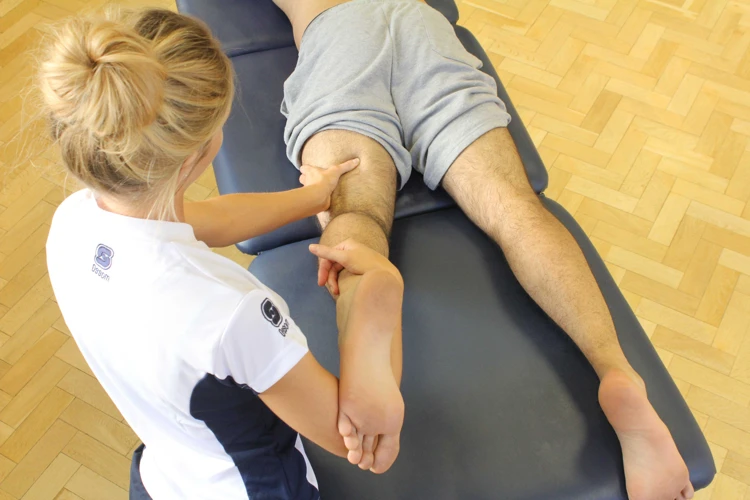
✅ Reduce Pain – Releases endorphins, the body’s natural painkillers, for effective pain relief.
✅ Reduce Inflammation – Increases circulation, delivering oxygen and nutrients to reduce swelling.
✅ Release Muscle Tension – Breaks up adhesions and trigger points, helping muscles relax.
✅ Improve Mobility – Stretches muscles and enhances range of motion for better movement.
✅ Accelerate Healing – Boosts circulation, speeding up recovery by delivering essential nutrients.
Additional Tips for Faster Recovery
✔️ Apply ice packs for the first 48 hours to reduce swelling.
✔️ Elevate the leg to improve circulation.
✔️ Stay hydrated to support muscle repair.
✔️ Perform gentle stretches after massage to maintain flexibility.
✔️ Avoid deep pressure until pain significantly decreases.
When to Avoid Massage
❌ If there’s severe pain, swelling, or bruising
❌ If the strain is a Grade 3 tear (seek medical attention)
❌ If you experience numbness or tingling in the leg
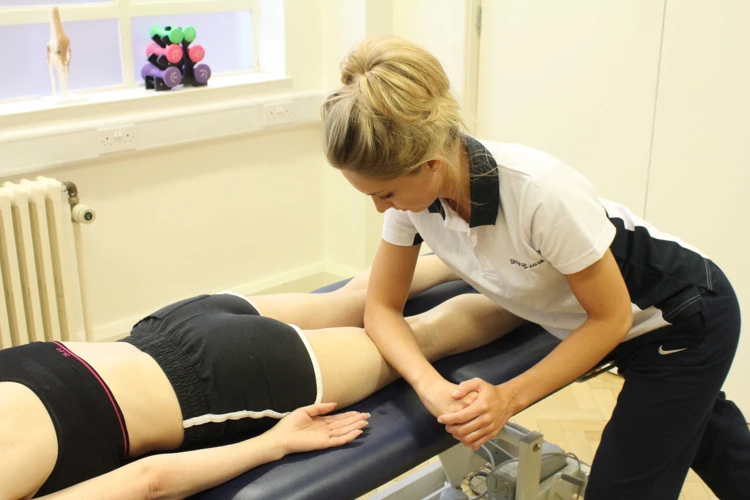
Frequently Asked Questions
Is There Any Risk Associated with Massaging a Pulled Hamstring?
When done correctly, massage can help reduce pain and restore range of motion in a strained hamstring. However, it is important to note that there is a potential for further injury if the massage is performed incorrectly or too aggressively. If the hamstring has been injured severely, or if there is any bleeding present, it is important to seek medical attention before attempting to massage the area. Additionally, it is important to use proper technique to ensure that the massage is not too deep or too intense.
How often should a hamstring massage be performed?
✅ First 48–72 Hours:
Avoid massage. Instead, apply ice (15–20 minutes every 2–3 hours), rest, and avoid deep pressure to reduce swelling and inflammation.
✅ Regular Massage (After Initial 48–72 Hours):
Depending on the severity of the strain, massage frequency can range from twice a week to three times a day to aid recovery.
Start with gentle techniques and gradually incorporate deeper pressure as healing progresses.
✅ Before and After Activities:
Before activity: Massage helps increase flexibility and reduce the risk of re-injury.
After activity: Massage reduces soreness, fatigue, and muscle tightness for faster recovery.
✅ Long-Term Maintenance:
Even after the injury has healed, regular massage helps maintain hamstring health, prevent future strains, and improve flexibility.
Frequency can be adjusted based on activity level and muscle condition.
Consistent massage therapy, combined with proper stretching and strengthening exercises, will help ensure a full recovery and reduce the risk of re-injury.
When to Seek Professional Help
If you have a hamstring strain, it’s important to know when to seek medical attention. A doctor or physical therapist can assess the severity of your injury and provide a treatment plan tailored to your needs.
Signs You Should See a Professional
🔴 Severe pain or swelling that doesn’t improve with rest
🔴 Bruising or discoloration along the back of the thigh
🔴 Inability to walk or bear weight on the injured leg
🔴 Persistent weakness or stiffness even after home treatment
🔴 Recurring hamstring strains or ongoing discomfort
Treatment Based on Injury Severity
| Injury Severity | Recommended Treatment |
|---|---|
| Mild Injury | RICE (Rest, Ice, Compression, Elevation), Physical Therapy |
| Moderate Injury | RICE, Physical Therapy, Anti-Inflammatory Medication |
| Severe Injury | RICE, Physical Therapy, Anti-Inflammatory Medication, Corticosteroid Injection, Surgery (if necessary) |
For severe strains or complete tears, medical intervention may include corticosteroid injections to reduce swelling or, in rare cases, surgery to repair the muscle. Seeking professional help ensures proper healing and lowers the risk of re-injury. 🚑
How long does it typically take for a hamstring strain to fully heal with massage?
Massage can help speed up recovery by improving circulation, reducing pain, and enhancing range of motion. However, the healing time depends on the severity of the strain and individual factors like overall physical condition and rehabilitation efforts.
Estimated Healing Time Based on Injury Severity
| Severity | Healing Time (with Massage & Rehab) |
|---|---|
| Mild Strain (Grade 1) | 4–6 weeks |
| Moderate Strain (Grade 2) | 8–10 weeks |
| Severe Strain (Grade 3 – Partial or Full Tear) | 16 weeks or longer |
Factors Affecting Recovery Time
✔️ Severity of the Injury – The more severe the strain, the longer the healing process.
✔️ Consistent Massage Therapy – Helps reduce tension and improve blood flow, but must be combined with proper care.
✔️ Rest & Rehabilitation – Strengthening exercises, stretching, and physical therapy are essential.
✔️ Overall Physical Condition – Well-conditioned muscles tend to heal faster.
✔️ Proper Treatment Plan – A combination of RICE (Rest, Ice, Compression, Elevation), massage, and rehab optimizes recovery.
Conclusion
Massage can be a powerful tool in hamstring strain recovery, but it’s important to use the right techniques at the right time. Combine massage with rest, ice, and gentle stretching to speed up healing and prevent future injuries. If pain persists, consult a physical therapist or sports massage specialist for professional guidance.
📚 References
⚠️ Disclaimer:
This article is for informational purposes only and does not constitute medical advice. Always consult with a licensed healthcare provider or certified massage therapist before beginning any new treatment, especially if you have pre-existing health conditions or concerns.



